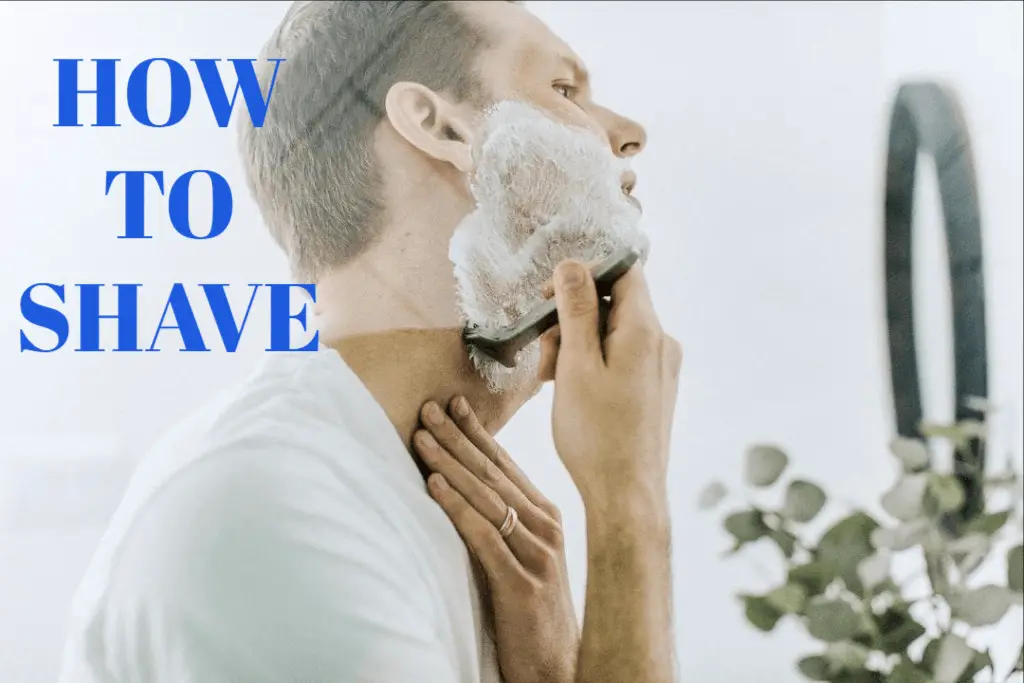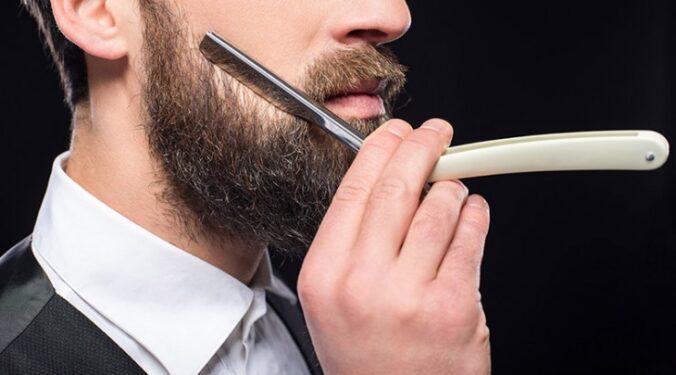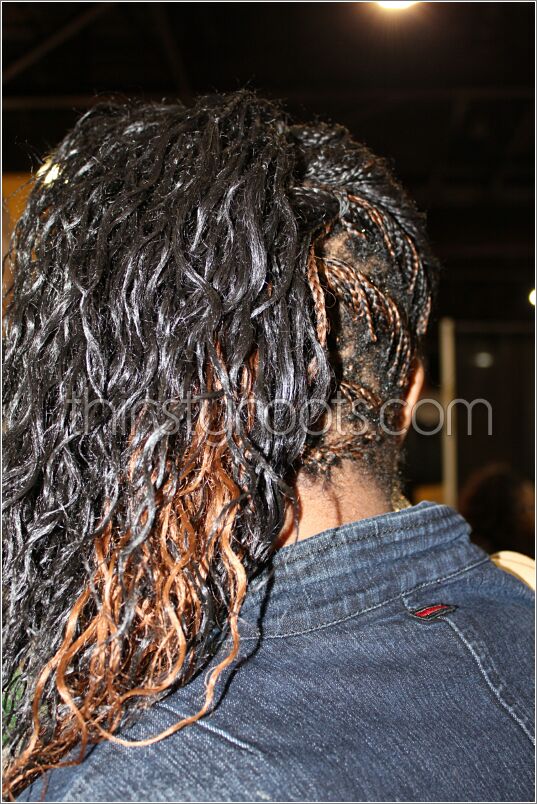Table Of Content

Make sure that you’re gently gliding the razor against your skin in the direction of hair growth. Shaving can sometimes lead to ingrown hairs or skin irritation, especially if not done correctly. Using a sharp razor, shaving in the direction of hair growth, and moisturizing the skin afterward can help minimize these risks.
11 Best Face Razors For Women, Per Dermatologists And Reviews - Women's Health
11 Best Face Razors For Women, Per Dermatologists And Reviews.
Posted: Mon, 05 Feb 2024 08:00:00 GMT [source]
So should shaving be preferred as a way to remove hair?
But it can also happen because your newly growing beard hasn’t been exposed to the natural elements yet. Soaps, sun exposure, and other chemicals all play a part in lightening your hair. Dr. Gonzalez offers some of her top tips to on how to shave your legs and make shaving a good experience. If you notice a sudden increase in facial or body hair, talk to your doctor. This could be a medication side effect or a sign of an underlying medical condition. Your doctor might also provide advice about various hair-removal techniques.
Should I believe headlines that say red wine is good for me?
Stenn said it's easy to see why people believe the myth. When people shave their hair after awhile, he said, the hair often feels very thin. Shaving can lead to irritation, cuts, and infections if your razor is dull or if it contains bacteria. To combat this, you will want to switch out the blades regularly and keep up good hygiene. As tweens, many of us looked forward to shaving our leg hair or our face – it’s a right of passage. You can finally wear shorts or a swimsuit in peace, or sport a peach-fuzz-free face.
Will Shaving Really Make Your Hair Grow Back Thicker? Derms Weigh In - Well+Good
Will Shaving Really Make Your Hair Grow Back Thicker? Derms Weigh In.
Posted: Fri, 06 Mar 2020 08:00:00 GMT [source]
Up Your Skin Care Game With These Must-Have Beauty Devices At Every Price Point

They might recommend more permanent options, such as waxing or laser removal, depending on skin type, body part, and more. For best results, shave both with and against the direction of hair growth. Additionally, you should make sure that you’re rinsing the razor with each stroke. Remember that pubic hair tends to be coarser than other body hair and can clog the blades of your razor quickly.

Does Shaving Make Your Hair Grow Back Faster? Experts Unpack 10 Popular Myths.
So let’s try to put this myth to rest—although, like our hair, it will likely reemerge. Experts explain the root of this myth, why hair looks different after shaving, and how to get a better shave, too. If you want to remove unwanted body hair, whatever removal method you choose will usually have some pros and cons. "Scientists have tried to demonstrate, to test this idea, and some scientists claim that this occurs," he said. "But then they see the hair comes back thicker," he added. "In fact the bottom portion of the hair shaft that's shaved is already thicker."
In conclusion, the notion that shaving makes hair thicker is a myth that lacks scientific evidence. Shaving merely cuts hair at the skin’s surface and does not affect its thickness, density, or growth rate. While hair may appear darker or coarser after shaving due to the blunt edge created, this is only a temporary cosmetic effect. Ultimately, shaving remains a safe and effective method of hair removal for those seeking smooth, hair-free skin. As nearly anyone who’s shaved their pubic area can attest, the skin here is very delicate and has a lot of potential for ingrown hair growth.
What does sunlight do to skin?
This thicker part of a hair follicle's shaft is the first to emerge from shaved skin, giving the appearance and feel of thicker-growing hair. Yet this thick base naturally wears down into a thinner tip over time as the hair continues to grow. Shaving the groin area also takes special care to prevent ingrown hairs, cuts, and other signs of irritation. It’s best to use a new razor each time you shave this part of your body. You may also find yourself noticing hairs more if you’re on the lookout for them. No, shaving does not affect the rate at which hair grows.
The secret isn't more blades and more canned goo but a single wicked edge. Shaving is 50+ days of a woman's life and 85+ for a man's. Do you want to spend that time hating or enjoying what you are doing? The better way is wetshaving, come and see what "they" didn't want you to know.
Addressing Concerns about Faster Growth
And there’s a longer-term option to consider, especially if you have a lot of unwanted hair that tends to grow back very quickly. Longsworth suggests avoiding shaving this area right before you head to the beach, a pool, or any situation where a lot of sweating is involved. She recommends shaving at night and avoiding deodorant after the fact to give the skin a chance to repair overnight.
Shaving simply removes hair that has already grown, allowing new hair to emerge from the follicle as part of the natural growth cycle. Shaving does not make your hair grow back thicker or faster, dermatologists at the Cleveland Clinic, Mayo Clinic, and Healthline all say. This is a myth that has been disproved by strong scientific evidence for many years, according to an article on medical myths published in the British Medical Journal (BMJ). “In general, proper shaving techniques are helpful to prevent razor bumps and irritation,” says Dr. Garshick. “This includes shaving in the direction of hair growth and making sure to always use a clean and sharp razor.” Using a razor with multiple blades can also help you get a closer shave.
Take a hot shower before shaving—the steam helps open the pores for a close, clean shave with minimal skin irritation, Longsworth explains. Apply minimal pressure to your razor, use short, gentle strokes, and move with the grain. For those with less sensitive skin, Longsworth says you can re-lather the face with some extra shaving cream or gel and finish by gently shaving against the grain. This, she says, will give you the closest possible shave without suffering any nicks or cuts. For those with more sensitive skin, we suggest skipping that final pass.
Longsworth suggests starting at your ankles and working your way up the leg using short, gentle strokes for better control. Take extra precaution when approaching the knee area, as it tends to be drier and more prone to nicks and cuts. Hair on the upper leg tends to be finer than the hair on the lower leg, so shaving direction matters a bit less according to Shays. Because the skin here is tougher, Longsworth says you can try a depilatory cream to dissolve the hair at its root, which will buy you a few weeks before new growth occurs.
That said, while you can’t actually alter the thickness of your body hair, alternative methods to shaving such as waxing offer a more precise removal. As Dr. Miller mentioned, shaving only cuts off the softer, top part of your hair leaving behind the thicker base. Waxing normally pulls the entire hair from the follicle, which might help leave your skin feeling smoother for a longer period of time.

No comments:
Post a Comment